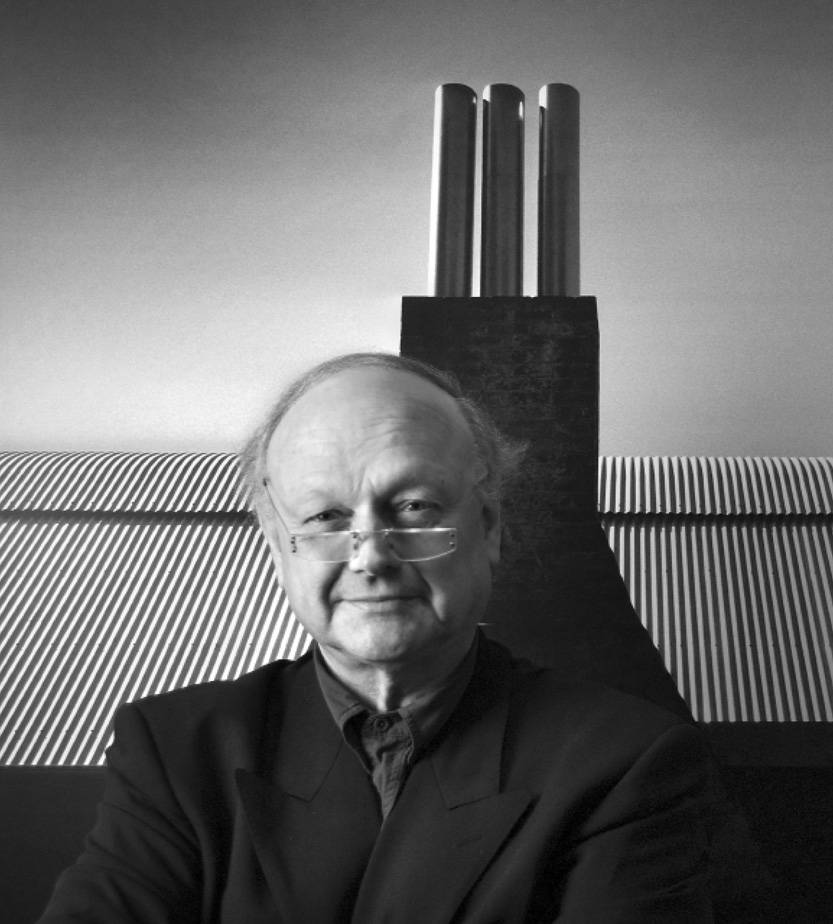Glenn Murcutt in a portrait by Max Dupain
Area has for many years dedicated one of its monographic issues to an architect, seeking to describe how he works, and thus how he acts and thinks, with particular attention. It may therefore be interesting for every reader of the magazine, as well as those who work for it, to take a look in retrospect on the authors “encountered” and to retrace the suggested critical analysis of their work, in order to appreciate the cultural approach the magazine has, evidently and naturally, built over time. Unlike other sites and centres of reflection (which is what a magazine, especially an architecture magazine, should represent) Area has sought, with this constant work of research and investigation. not so much to force an interpretation or reality as to select over time, independently of fashions and the successes of the moment, those proposals and themes which have been able to express the most authentic significance of a discipline, architecture, which should prioritize the most authentic and “genuine” sense of homes and living. While this may appear self-evident, it is not, something which will be demonstrated by the oppositive research we are currently conducting for a forthcoming issue of the magazine, dedicated to the theme of art and architecture, where design measures swords, vice versa, with the figurative arts, the exception, expressive research, communication and, when it is carried to extremes, provocation.
So, Glenn Murcutt expresses, with his work, his life, his career, the essence of continuity. If, to the undersigned, it is a matter of a continuity of works and interests along a chosen trajectory, more in general and certainly with the greatest relevance, the continuity expressed by Murcutt valorises the theme of a development which is constantly calibrated on a reading and observation, scientific yet sensitive, of his surroundings and their specific natural traits. His designs and works appear so familiar, in terms of cultural proposals, because they express a modernity that is attentive to the themes and values, which are essential to us, of the existing environment and its elements.
We could here, with a somewhat biased approach, reinterpret the architectures proposed by this reserved and incisive Australian architect as another link in the long evolutionary chain which connects Pagano’s exhibition of 1936 for the Milan Triennale (to persist in a reference already mentioned in the previous issue) dedicated to Italian rural architecture, expression of a modernity which is intrinsic in every autochthonous construction, to the critical work done by Ernesto Nathan Rogers in the Fifties on the value of tradition and observation of the context. Concretely and operatively, it is a matter of Murcutt’s natural choice of another modernity, opposed to every internationalism and manifest, a modernity which runs through the 20th century like a red thread, along the very same Northern European paths trodden, or perhaps we should rather say cut, in the stones and works of Lewerenz, of Asplund, of Aalto, until the recognition of Jorn Utzon as an evident and unchallenged master. It is a matter of a particular reading of reality, or rather an attitude, which he has developed since he, as he himself remembers, observed the works of Frank Lloyd Wright, Gordon Drake, Charles and Ray Eames as a youth, when he browsed the magazines his carpenter father brought home, and which he has matured after graduating, 1962 when Murcutt made his first journey, visiting Scandinavia. Moreover, it is a matter of a work which continuously bears witness to a knowledge which is in any case filtered by a craftsmanship apprenticeship, as well as by a profound familiarity with the landscape he is surrounded by, with its light, colours and materials, its original inhabitants, the culture expressed by the manners, costumes and traditions of the Aboriginal people, who have become a source of inspiration and a reference to Murcutt.
There is a lot to learn from the work of Murcutt; not so much from its character aspects, the search for silence, the desire to work alone, the obstinate insistence on drawing every detail by hand, especially in section regardless of the plan (which is almost always a narrow and elongated rectangle), as from his ability and insistence on certain themes which are indispensable to the contemporary reality: his respect for differences, the simplicity and humility of his work, his observation of the landscape and the environmental issues, the value of tradition, the discovery rather than the arbitrariness of his creations. These aspects make Murcutt an anthropologist-architect, a designer of hopes and at the same time of memories, a tireless and coherent researcher, a landmark for those who consider architecture as an art at the service of humankind. This may be one of the reasons why Murcutt has, for more than ten years, taught in the world’s leading universities, why he is invited as an expert in many international juries, holds conferences and gives lessons to young architects and students, spending much of his time far from his “loved land”, slowing down a professional activity which is still flourishing, it is for this continuous lesson of life and style that we must be grateful to him.
Thank you, Glenn Murcutt!





